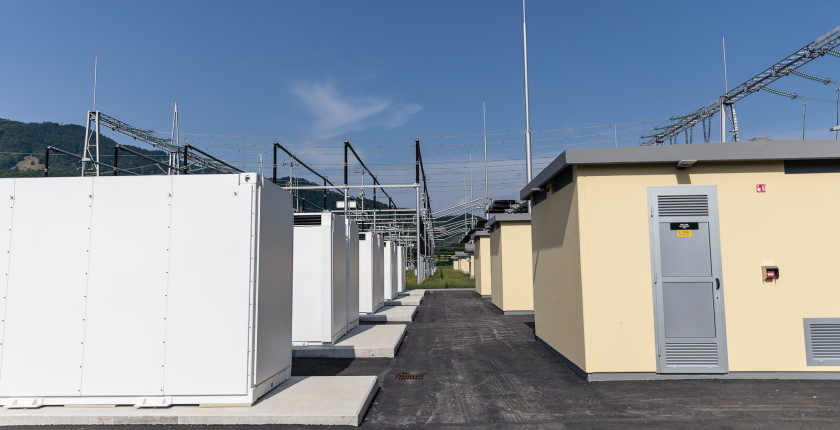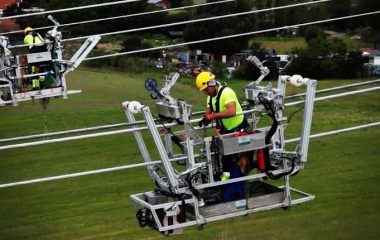
Photo: Sincro.Grid
Sincro.Grid has passed another milestone with the start of the trial operation of two battery storage units with 10 MW in total power and a storage time of five hours. Slovenian and Croatian TSOs and DSOs are implementing Europe’s first bilateral flexibility and voltage control project.
Battery storage systems at substations Okroglo and Pekre in Slovenia have started trial operations within a joint endeavor with Croatia. The two units have 5 MW each and a storage time of five hours, translating to 50 MWh in total.
They are part of Sincro.Grid, a project being implemented by the Slovenian and Croatian transmission system operators – ELES and HOPS and respective electricity distribution system operators SODO and HEP ODS. They have joined forces to introduce digitalization into the existing electricity infrastructure. It is the first project in Europe where neighboring TSOs are regulating and optimizing voltage in their networks.
The electricity TSOs and DSOs of Slovenia and Croatia have installed six compensation devices and they are setting up the Virtual Cross-Border Control Centre
The companies have set out to solve the issue of overvoltage in some parts of the network and integrate a growing share of dispersed renewables by meeting an also increasing need for flexibility. In addition to the two battery units, they installed four other compensation devices to maximize the utilization efficiency of the existing infrastructure.
In both national control centers, a joint application was installed for the Virtual Cross-Border Control Centre (VCBCC). Chief Executive Officer of ELES Aleksander Mervar earlier told Balkan Green Energy News that it was a completely new idea on a global scale for smart grids.
The project managers say Sincro.Grid has a positive effect on the surrounding countries’ networks
“With the Sincro.Grid project we will be solving problems with overvoltage, which are tied to the aging of equipment and greater defect probability and a lower level of reliability, with the implementation of compensation devices in both Slovenian and Croatian transmission grids,” Mervar said.
According to the project managers, the joint efforts have a positive effect on the grids in the surrounding countries. Sincro.Grid is worth EUR 88.6 million, of which the European Commission provided EUR 40.5 million. Another compensation device, a variable shunt reactor, should be installed in the Cirkovce substation in phase 2.









Be the first one to comment on this article.